ANTARCTIC POEMS
A traveling solo show along the chilean territory in 4 museums of the country from north to south: Museo Ruinas de Huanchaca de Antofagasta (09.03-07.05), Parque Cultural de Valparaíso (07.01-19.02), Museo de Arte Moderno de Castro (27.05-10.08) and Museo de Historia Natural Rio Seco de Punta Arenas (01.12)
2023
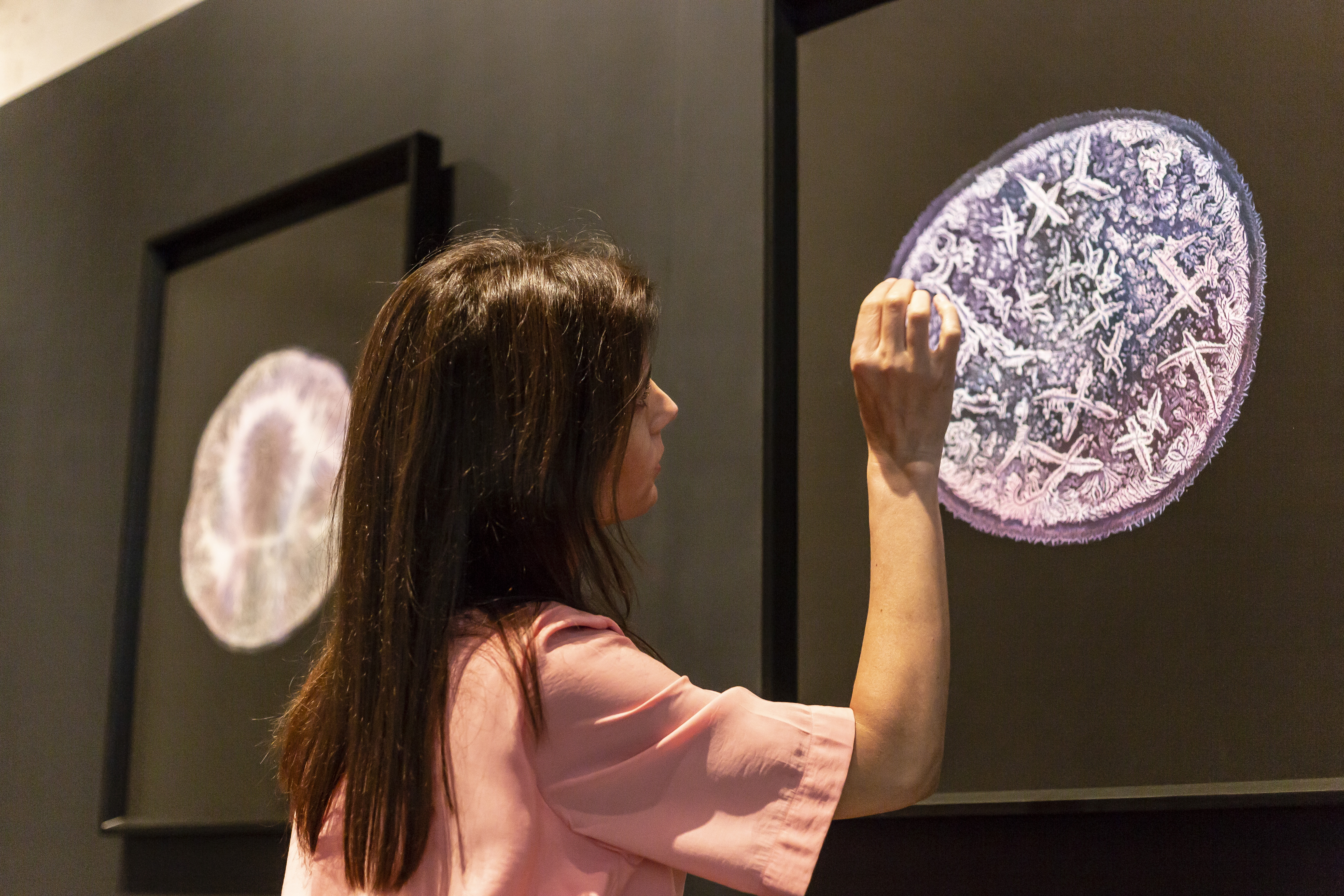
Human tear under the microscope
Photo: Rodolfo Muñoz
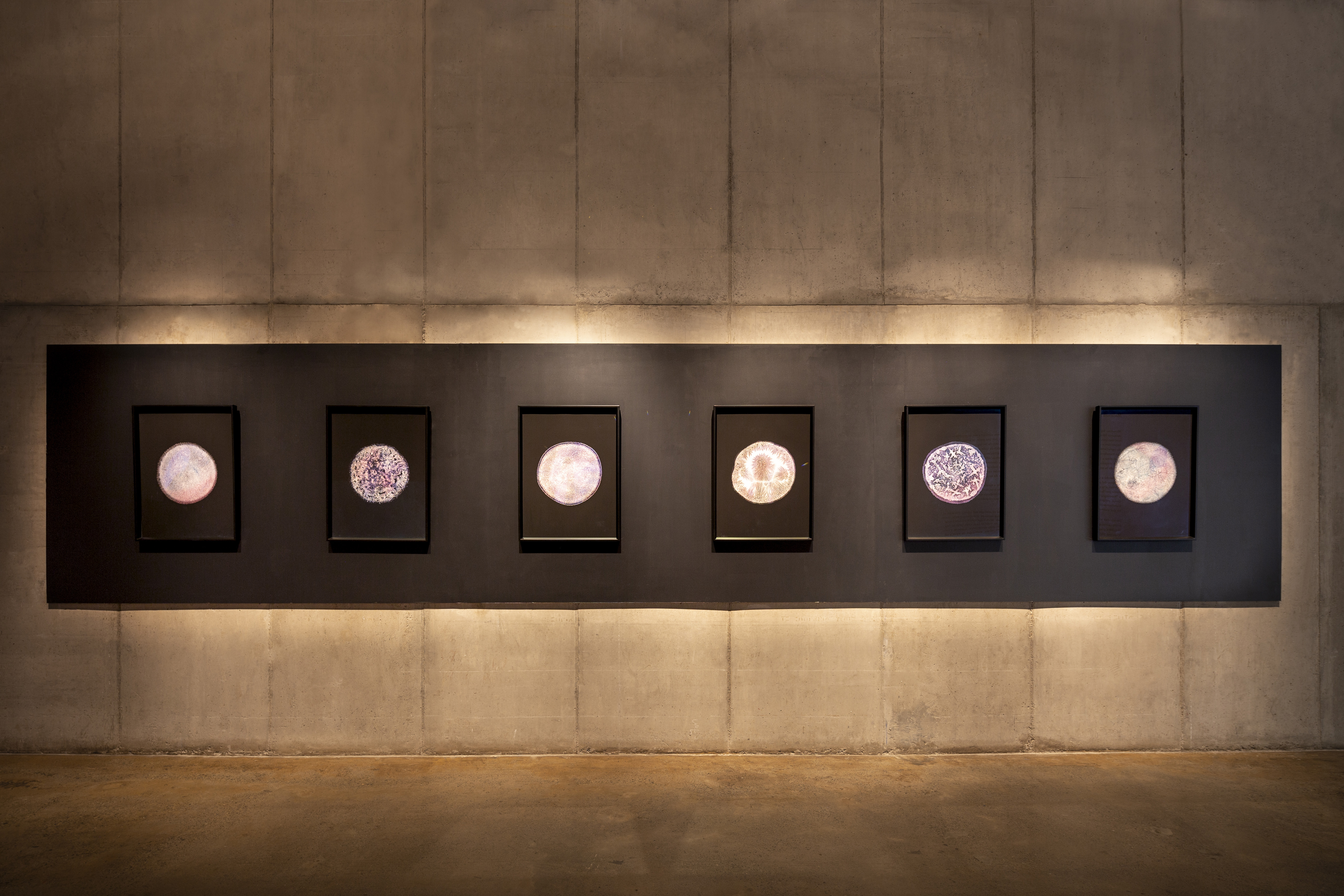
Human tears under the microscope
Photo: Rodolfo Muñoz
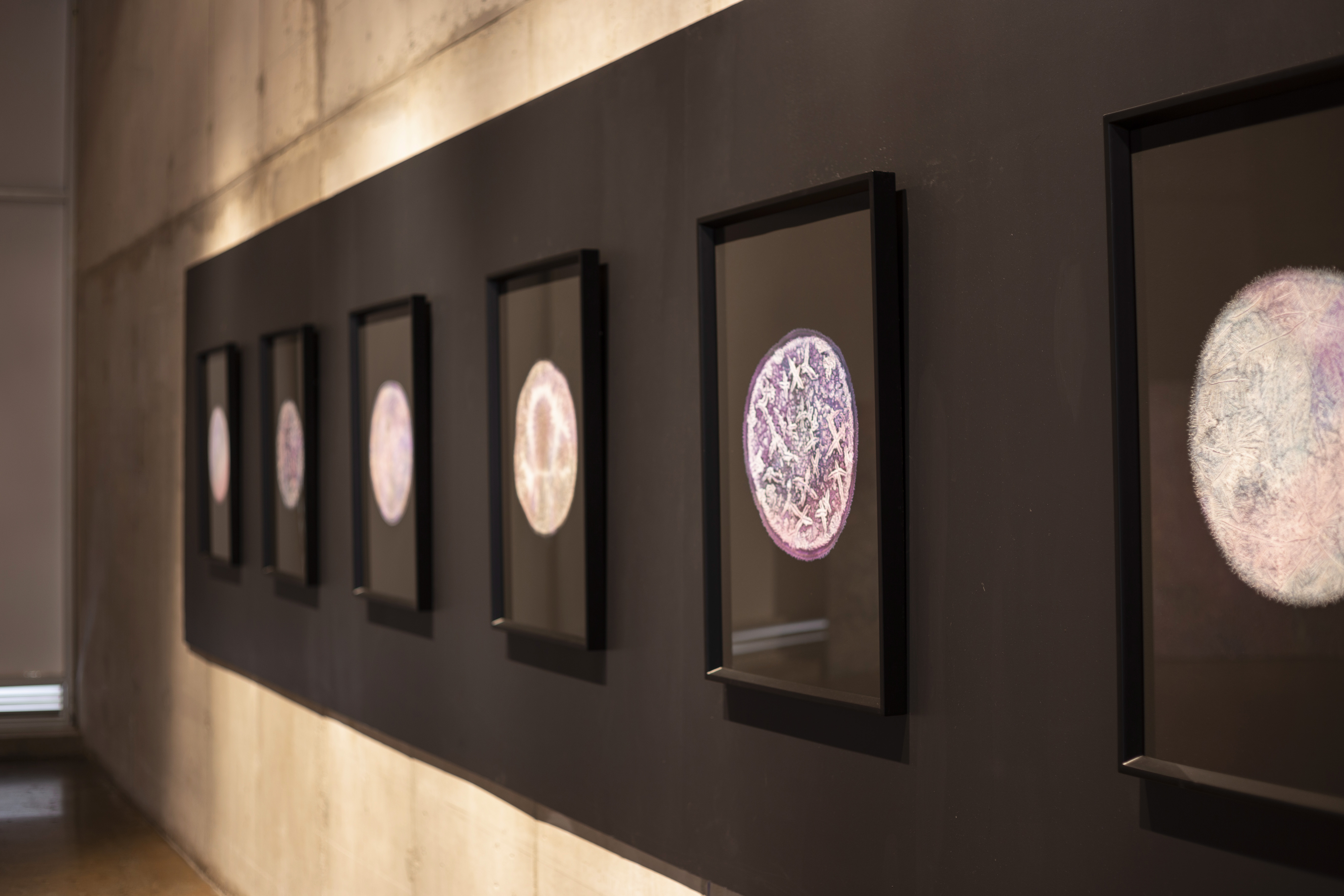
Human tears under the microscope
Photo: Rodolfo Muñoz

Porcelain and magenta lighting, on the background a close up of the tears texture
Photo: Rodolfo Muñoz
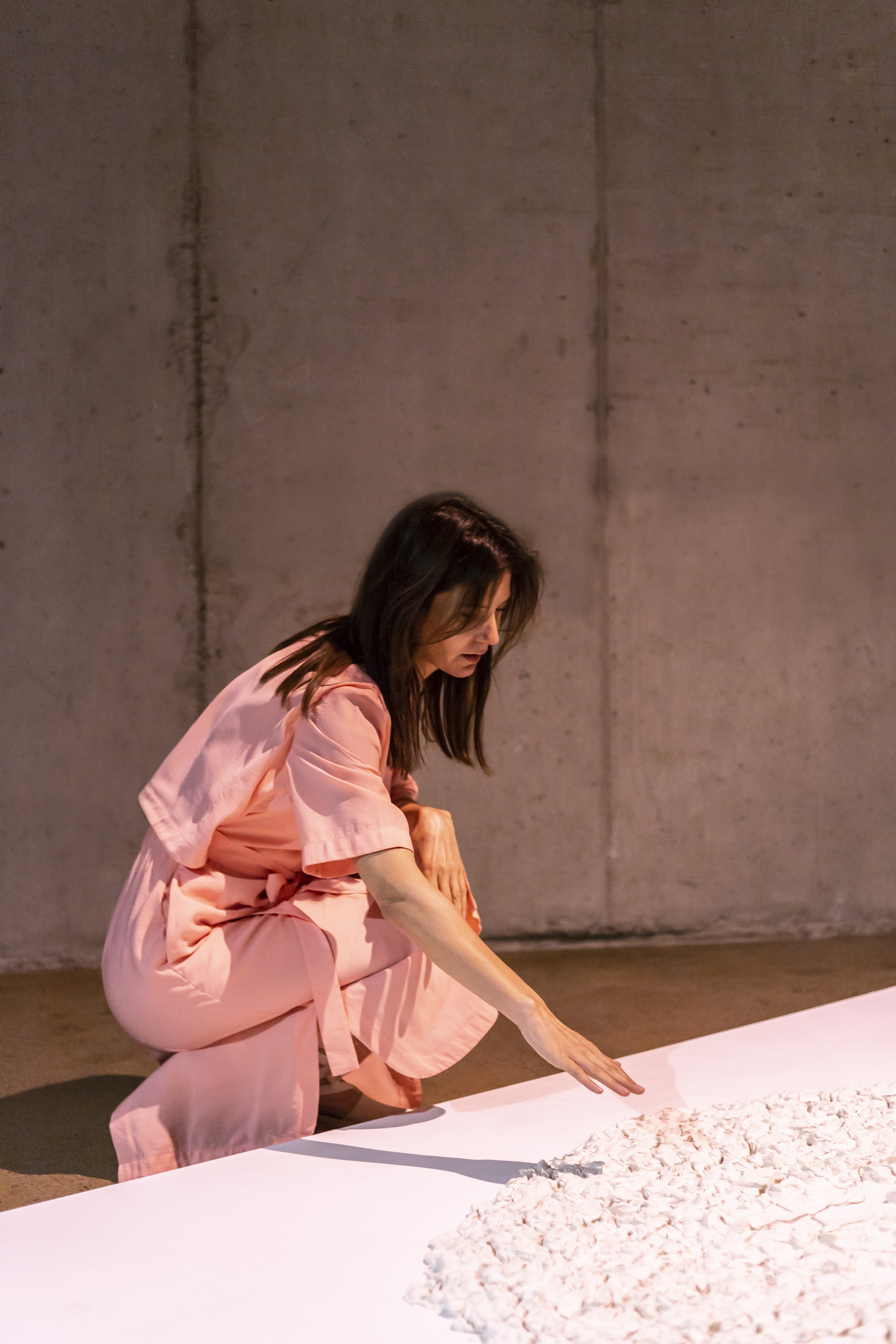
Porcelain and magenta lighting
Photo: Rodolfo Muñoz
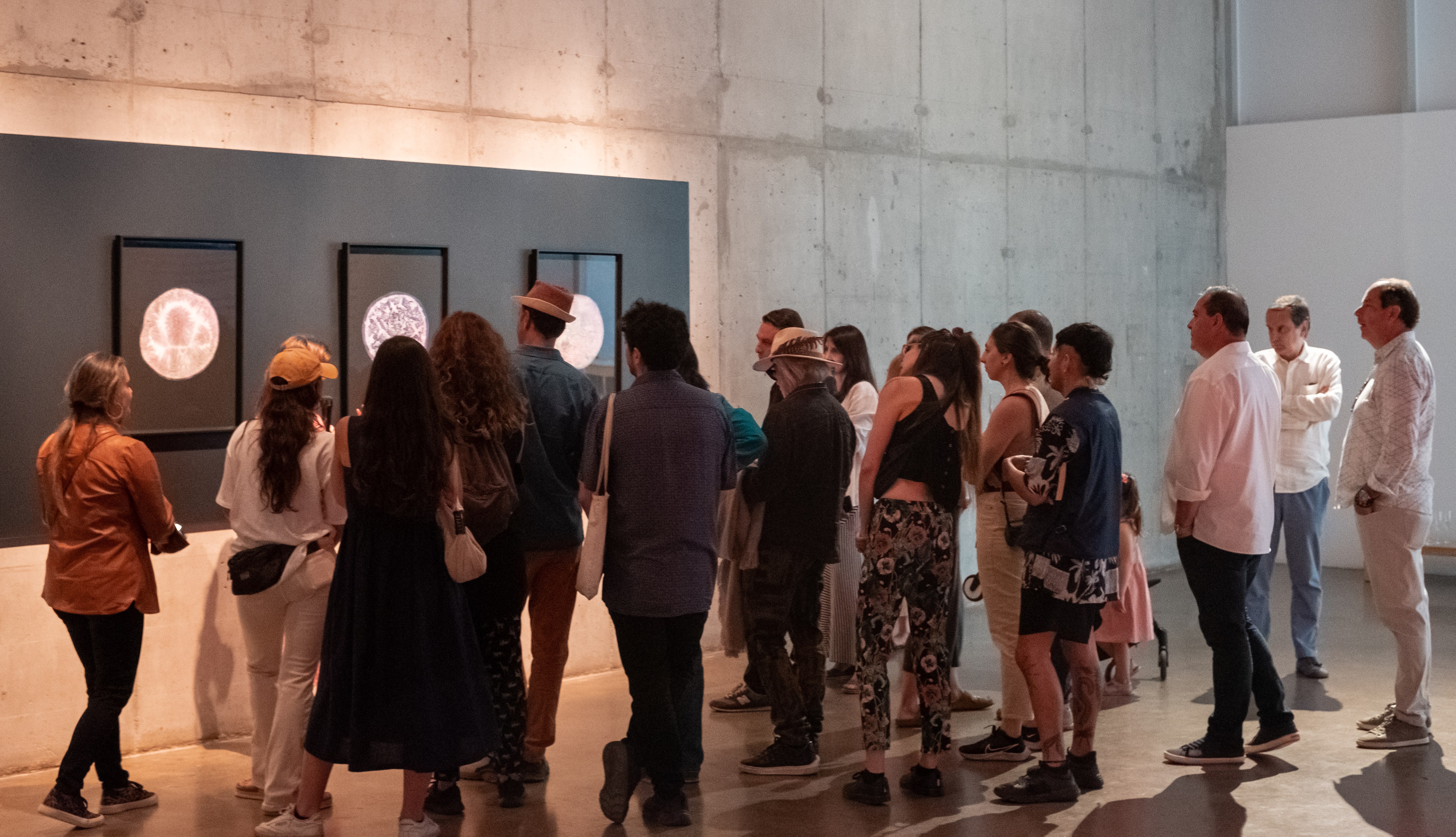
Visitors observing closely the rich texture of the tears
Photo: Juan José Ayestarán
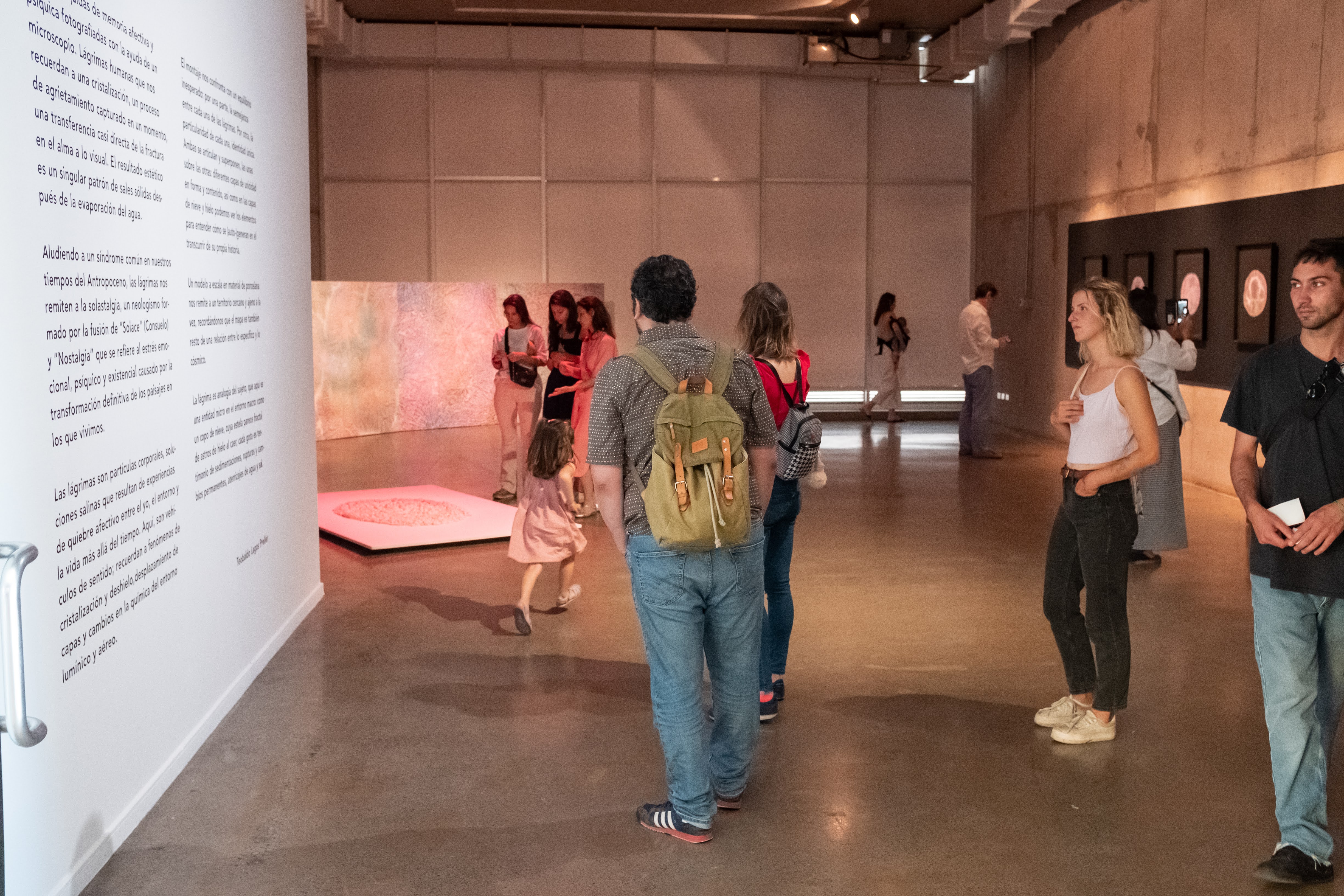
Visitors observing closely the rich texture of the sculptrue
Photo: Juan José Ayestarán
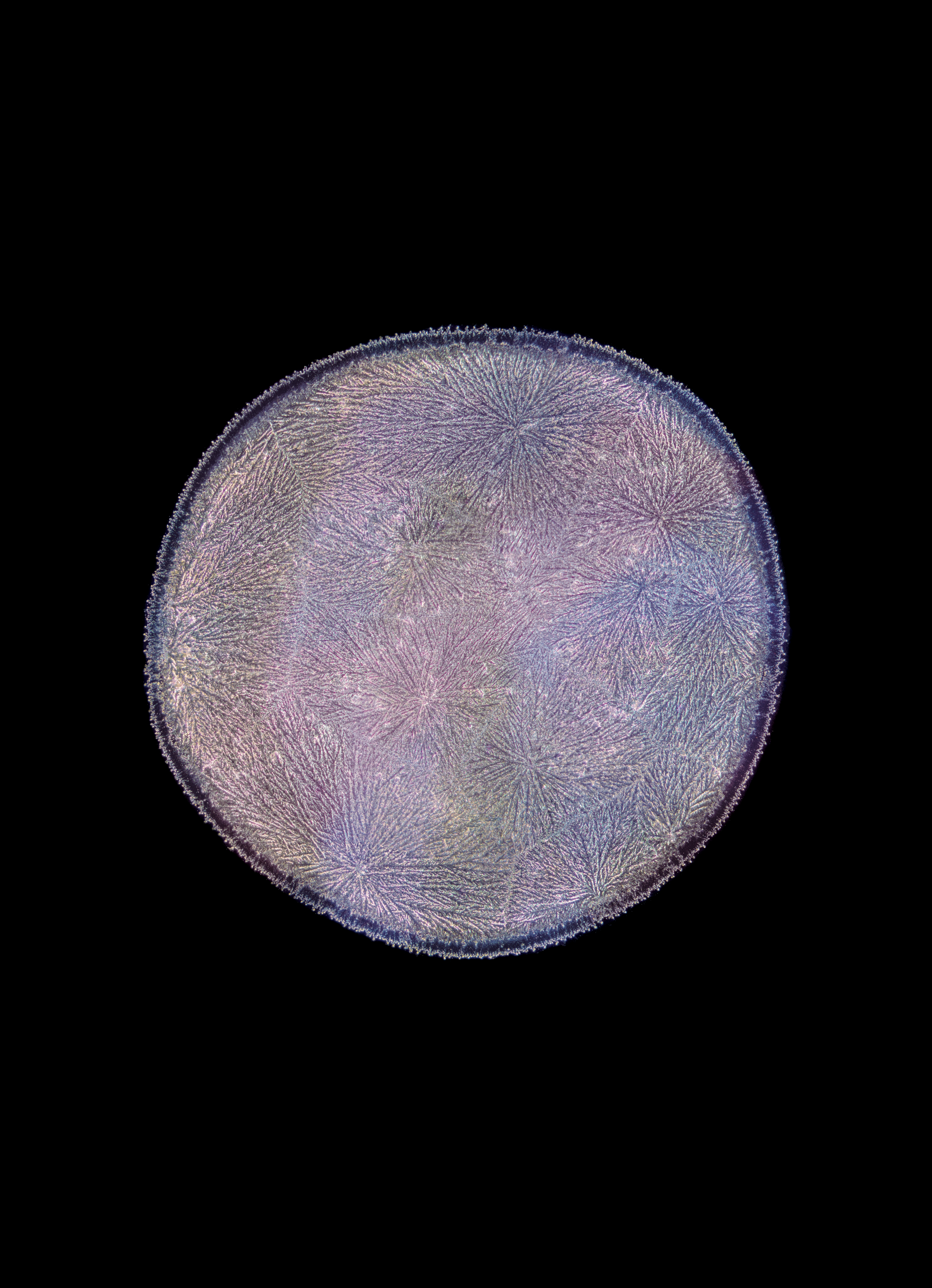
Human tear under the microscope
Photo: Macarena Ruiz-Tagle
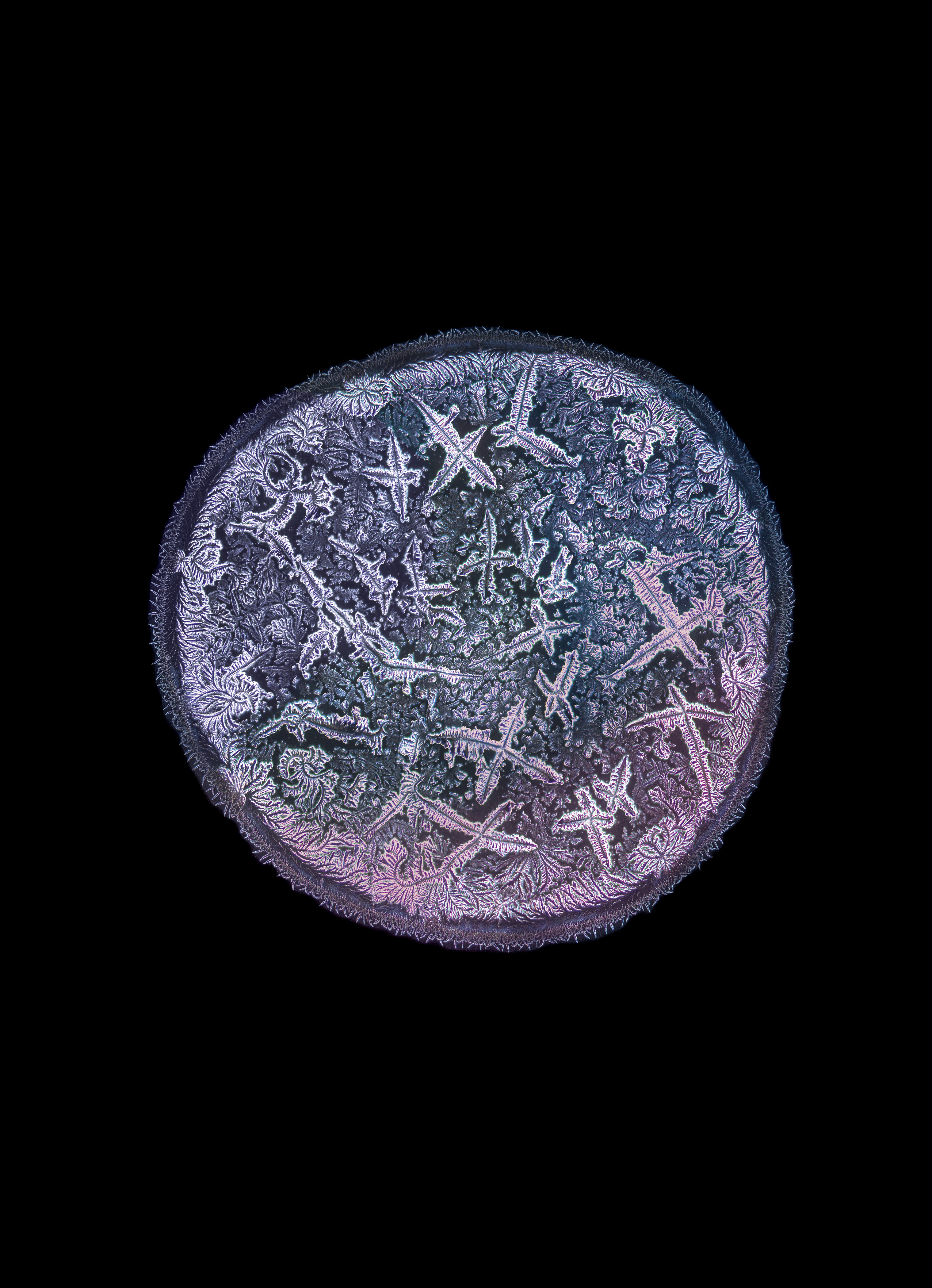
Human tear under the microscope
Photo: Macarena Ruiz-Tagle
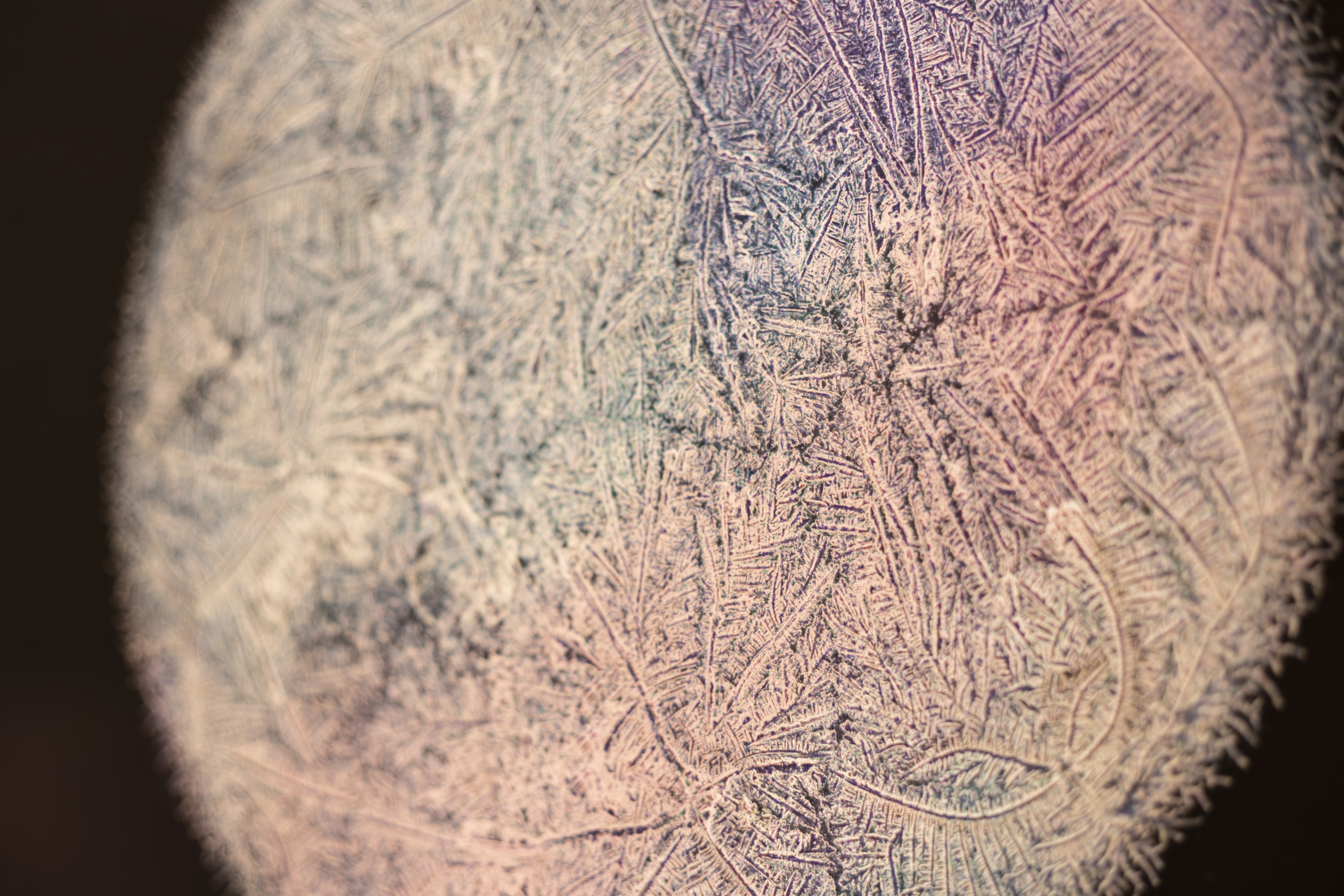
Human tear under the microscope
Photo: Rodolfo Muñoz
Liquid samples of affective and psychic memory photographed with the aid of a microscope. Human tears that resemble crystallization, a cracking process captured in a moment, an almost direct transfer from soul fracture to the visual. The aesthetic result is a unique pattern of solid salts after the evaporation of water.
Alluding to a common syndrome in our Anthropocene times, tears refer us to solastalgia, a neologism formed by the fusion of "Solace" and "Nostalgia" referring to the emotional, psychic, and existential stress caused by the definitive transformation of the landscapes in which we live.
Tears are bodily particles, saline solutions resulting from experiences of emotional rupture between the self, the environment, and life beyond time. Here, they serve as vehicles of meaning; reminiscent of phenomena of crystallization and thawing, displacement of layers, and changes in the chemistry of the light and air environment.
The installation confronts us with an unexpected balance: on one hand, the resemblance between each tear. On the other hand, the uniqueness of each one, a unique identity. Both are articulated and overlapped, one upon the other: different layers of uniqueness in form and content, just as in layers of snow and ice we can see the elements to understand how they (self-)generate in the course of their own history.
A scale model of the Salar de Atacama in porcelain material refers us to a territory both close and distant, reminding us that the map is also a remnant of a relationship between the specific and the cosmic.
The tear is an analogy of the subject, which here is a micro-entity in the macro environment: like a snowflake, whose trail appears fractal of ice stars falling, each drop is a testament to sedimentation, ruptures, and permanent changes, landings of water and salt.
Text: Teobaldo Lagos Preller